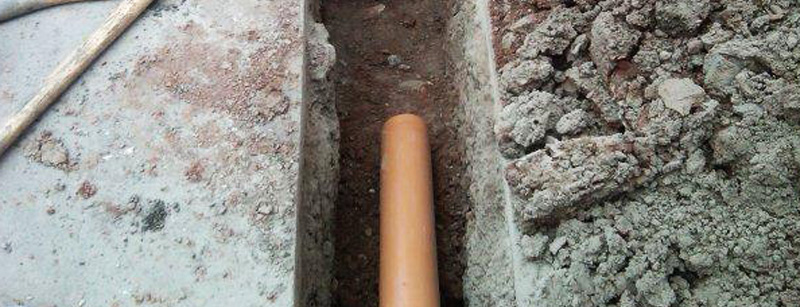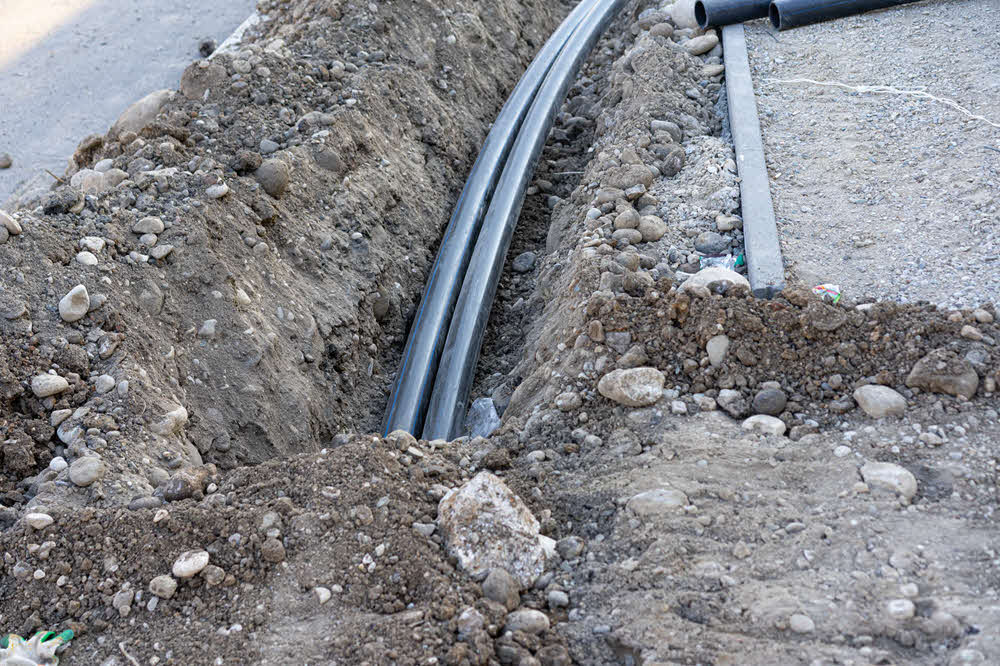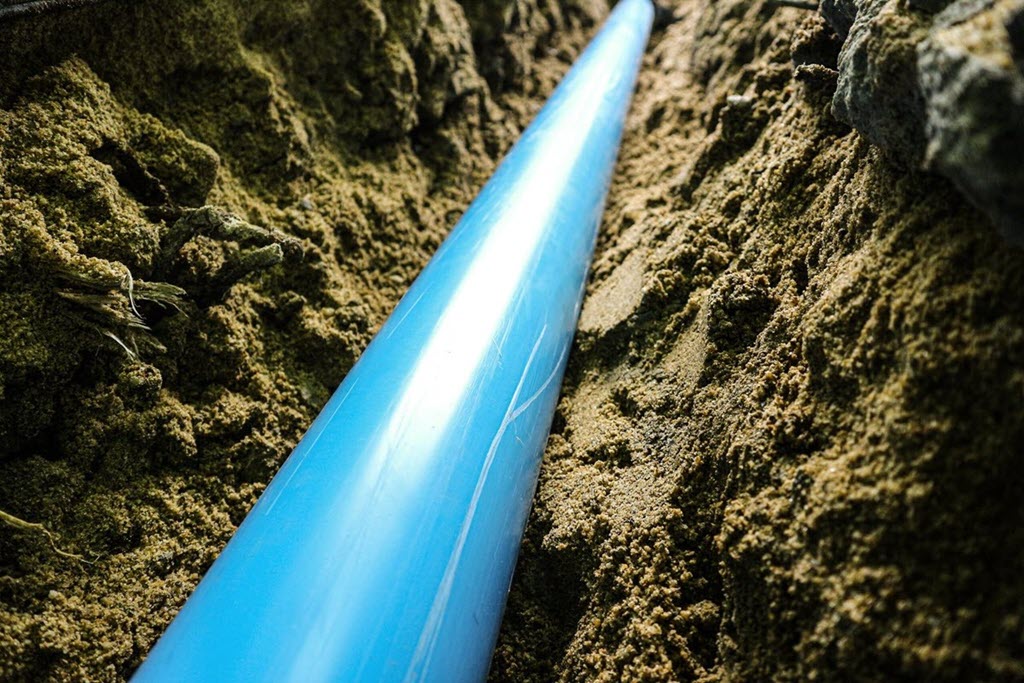Pipe Laying Servicesin Marysville MI
Pipe Laying Services to Support Efficient Infrastructure Development
We Are Locally Owned & Operated For Over 37 Years
Contact Us Today!
We Serve Businesses In And Around The Following Cities:
About Pipe Laying Services
Introduction to Pipe Laying in Commercial Properties
In the landscape of commercial property development, a detail-oriented approach is crucial to ensure that every single aspect of the project is executed with the highest level of precision. One of the areas demanding such exactness is the installation of underground pipelines. In the city of Marysville, the importance of professional pipe laying for commercial buildings cannot be overstated.
Pipe laying in commercial properties involves the careful placement and installation of different types of pipes, such as storm water drains pipes, propane lines, PVC storm water pipes, and sewer lines, among others. The meticulous yet efficient process of pipe laying serves the fundamental requirements of functional plumbing, gas provision, and efficient drainage systems, all aspects that are critical to any commercial building. With years of experience in pipe installation, a trusted partner in this realm is essential. Companies like D&J Contracting offer a plethora of pipe laying expertise for commercial structures in Marysville.
The Comprehensive Process of Pipe Laying
For the uninitiated, the process of pipe laying can seem daunting. From running a propane line underground to setting up a drain pipe for rainwater, it requires a mix of technical expertise, precision, and practical knowledge. The journey begins with an inspection of the site to reckon the soil type, ground conditions, and plan the pipeline route. Post this assessment, the trench for the pipeline is excavated, followed by the meticulous installation of the pipelines. It’s crucial to note that each pipe type, from a PVC storm water pipe to an underground sewer line, has its unique installation processes, which are abided by strictly.
After the pipeline installation, testing follows wherein the pipelines are checked for leaks or faults. In case of any detection, respective measures are taken before the final stage, the backfilling and compaction of the trench. Ensuring pipes are correctly and securely installed is of utmost importance, and the professional team at D&J Contracting ensures a flawless process from start to completion.
Real-World Applications and Advantages
The process of pipe laying might seem complex, but its real-world applications and underlying benefits make it a necessary facet of city infrastructure – especially in commercial settings. For one, laying of an underground gas pipe provides a safe and efficient way for the transmission of natural gas for heating, cooking, and other commercial uses. In the case of storm water drain pipes and underground storm pipes, they play a pivotal role in proper rainwater management, preventing water logging and related harm to property and infrastructure.
Quality pipelaying also results in substantial financial savings by preventing potential damage to the property and unnecessary repairs due to poorly installed systems. Efficiently installed drain pipes for rainwater, as an instance, can prevent the downtime and disruption that often follow flooding incidents in the commercial properties.
All these advantages highlight how choosing experienced contractors like D&J Contracting for pipelaying services can result in a multitude of benefits. Their extensive experience and local reputation in Marysville ensure a high-quality job.
Value and Impact of Professional Pipe Laying
Given its importance in maintaining the proper functioning and sustainability of buildings, pipelaying is not an area to be overlooked. Opting for experienced professionals to handle underground pipe installations will result in high-quality, safe and compliant pipe systems. This not only adds value to the property but also significantly mitigates long-term operational costs associated with repairs and maintenance.
The value offered by professional pipe laying is tangible. For instance, suppose a company takes up the task of running a propane line underground. In that case, the correctly installed and maintained systems ensure a consistent and reliable supply of gas in the commercial property, reducing the risks of gas leaks, and thereby securing the safety of the building occupants.
It’s not just about the technical expertise – using a local company like D&J Contracting in Marysville allows businesses to leverage their local knowledge and experience to navigate specific territorial challenges. This mixture of local insight and industry expertise makes them an ideal partner for businesses in Marysville looking for pipelaying services.
Articulating the Future: Reflecting on Pipe Laying
As we look towards the future of commercial property development in Marysville, the role of professional pipelaying continues to surge. With increased focus on sustainability and longevity, the demand for high-quality underground sewer pipe installation, running gas pipe underground, and more will persist to rise.
It’s a call for businesses to acknowledge the role of professional pipelaying in their infrastructural development, taking the time to ensure their commercial property pipeline needs are handled by experienced professionals like D&J Contracting.
As we explore the at-times complex and always crucial world of pipelaying, it is abundantly clear that the benefits far outweigh the effort involved. Having elaborated on the absolute necessity of expert pipelaying services, we are left in no doubt of the valuable role it plays in the efficient, effective, and profitable operation of commercial properties in Marysville. Formulating a strategic, collaborative approach in this aspect can yield the best possible results for all involved.
Pipe Laying Services Gallery


Call Us Today to receive your Free Quote for
Pipe Laying in Marysville
Serving: Marysville, Michigan

About Marysville, Michigan
Marysville traces its history back to 1786 when Antoin Morass built a sawmill at Bunce Creek. Later, in 1817, Zephaniah W. Bunce sailed up the St. Clair River and settled at the place of the mill, naming it Bunce Creek. This would later become the property of the Detroit Edison Marysville Power Plant. He later became postmaster and a member of the Michigan Territorial Council.
Meanwhile, two businessmen, Meldrum & Park, founded a sawmill in 1792 at the location now known as Cuttle Creek. This settlement was located in the southern part of current day Marysville, two streets are named after them.
Also having a street named for him was Colonel Andrew Mack, a native and the 11th mayor of Detroit. He bought Meldrum and Park’s mill and built his home and a general store along the St. Clair River. The small settlement with Mack’s general store and mill was called “Mack’s Place” and was awarded a post office. Mack was a state representative, Colonel in the War of 1812, and a co-founder of the Detroit Free Press. Colonel Mack and his wife, Amelia, are buried on the north bank of Cuttle Creek in the Riverview Golf Course.
Later, Edward P. Vickery settled at the present day foot of Huron Boulevard in Marysville. He named the operation Vickery’s Landing and the settlement surrounding it eventually became known as Vicksburg. In 1854, the Mack’s Place post office was transferred to Vicksburg. However, there was already another Vicksburg, Michigan, so in 1859 the name was changed to Marysville, after Nelson Mill’s wife Mary.
These small settlements were brought together by inventor and engineer, C. Harold Wills. He worked at the Ford Motor Company, and was considered the “right-hand man” of Henry Ford. His contributions to the Ford company included designing Models A through T of the early Ford Motor Company. He was the inventor of many auto improvements including the planetary transmission used in the Models S and T. He was a pioneer in the use of vanadium steel and designed the “Blue Oval” logo, still used on Ford Products today. He resigned in 1919 and moved to Marysville to establish the C. H. Wills & Company on the banks of the St. Clair River. Two years later in 1921, the first Wills Ste. Clair automobile was produced (named for the factory’s location on the St. Clair River). The factory closed in 1926 after 14,000 vehicles were made by the Wills factory.
Wills’ and his partner John Lee provided much of the early infrastructure of Marysville, including electricity, sidewalks, roads, etc. so that Wills is credited with the street design and city planning of Marysville. He nicknamed Marysville the “Dream City”. The main area of the city to be developed before his company folded was the area surrounding Washington Elementary School. The community was deeply affected by the Great Depression, and the vision for the city was never fully realized. Subdivision development in the later half of the 20th century has further offset the strategic plan for the City of Marysville.
Wills did succeed to the extent that the Marysville area is nowadays a vibrant community. Wills’ former factory currently houses the Chrysler Corporation MOPAR parts distribution facility.
Marysville was incorporated as a village in 1919. It became an incorporated city in 1924.
- According to the United States Census Bureau, the city has a total area of 8.30 square miles (21.50 km), of which 7.31 square miles (18.93 km) is land and 0.99 square miles (2.56 km) is water.
- It is considered to be part of the Thumb of Michigan.
- Marysville can also be considered as in the Blue Water Area.
- The city lies on the border between Michigan and Ontario formed by the St. Clair River
- Marysville is neighbored by Port Huron, Michigan to the north, St. Clair, Michigan to the south, Kimball Township, Michigan to the west, and Corunna, Ontario to the east.
| Census | Pop. | Note | %± |
|---|---|---|---|
| 1920 | 941 | — | |
| 1930 | 1,405 | 49.3% | |
| 1940 | 1,777 | 26.5% | |
| 1950 | 2,534 | 42.6% | |
| 1960 | 4,065 | 60.4% | |
| 1970 | 5,610 | 38.0% | |
| 1980 | 7,345 | 30.9% | |
| 1990 | 8,515 | 15.9% | |
| 2000 | 9,684 | 13.7% | |
| 2010 | 9,959 | 2.8% | |
| 2020 | 9,997 | 0.4% | |
| U.S. Decennial Census | |||
As of the census of 2010, there were 9,959 people, 4,160 households, and 2,738 families residing in the city. The population density was 1,362.4 inhabitants per square mile (526.0/km). There were 4,515 housing units at an average density of 617.6 units per square mile (238.5 units/km). The racial makeup of the city was 97.5% White, 0.3% African American, 0.2% Native American, 0.6% Asian, 0.4% from other races, and 0.9% from two or more races. Hispanic or Latino of any race were 1.8% of the population.
There were 4,160 households, of which 29.8% had children under the age of 18 living with them, 53.1% were married couples living together, 9.1% had a female householder with no husband present, 3.6% had a male householder with no wife present, and 34.2% were non-families. 30.3% of all households were made up of individuals, and 14.7% had someone living alone who was 65 years of age or older. The average household size was 2.39 and the average family size was 2.99.
The median age in the city was 42 years. 23.4% of residents were under the age of 18; 7% were between the ages of 18 and 24; 24% were from 25 to 44; 28% were from 45 to 64; and 17.5% were 65 years of age or older. The gender makeup of the city was 48.1% male and 51.9% female.
As of the census of 2000, there were 9,684 people, 4,025 households, and 2,741 families residing in the city. The population density was 1,395.6 inhabitants per square mile (538.8/km). There were 4,180 housing units at an average density of 602.4 units per square mile (232.6 units/km). The racial makeup of the city was 98.18% White, 0.18% African American, 0.30% Native American, 0.43%Asian, 0.01% Pacific Islander, 0.33% from other races, and 0.57% from two or more races. Hispanic or Latino of any race were 1.16% of the population.
There were 4,025 households, out of which 30.8% had children under the age of 18 living with them, 57.4% were married couples living together, 8.0% had a female householder with no husband present, and 31.9% were non-families. 28.5% of all households were made up of individuals, and 14.3% had someone living alone who was 65 years of age or older. The average household size was 2.40 and the average family size was 2.96.
In the city, the population was spread out, with 24.4% under the age of 18, 6.9% from 18 to 24, 28.4% from 25 to 44, 23.3% from 45 to 64, and 17.1% who were 65 years of age or older. The median age was 39 years. For every 100 females, there were 94.0 males. For every 100 females age 18 and over, there were 89.2 males.
The median income for a household in the city was $49,299, and the median income for a family was $60,028. Males had a median income of $47,859 versus $27,321 for females. The per capita income for the city was $23,443. About 3.1% of families and 4.6% of the population were below the poverty line, including 5.1% of those under age 18 and 8.4% of those age 65 or over.
Call Us Today to receive your Free Quote for
Pipe Laying in Marysville
Related Services in Marysville, Michigan
We Serve Businesses In The Following Zip Codes:
48007, 48015, 48021, 48026, 48035, 48036, 48038, 48042, 48043, 48044, 48045, 48046, 48047, 48048, 48050, 48051, 48066, 48071, 48080, 48081, 48082, 48083, 48084, 48085, 48088, 48089, 48090, 48091, 48092, 48093, 48098, 48099, 48225, 48230, 48236, 48310, 48311, 48312, 48313, 48314, 48315, 48316, 48317, 48318, 48397